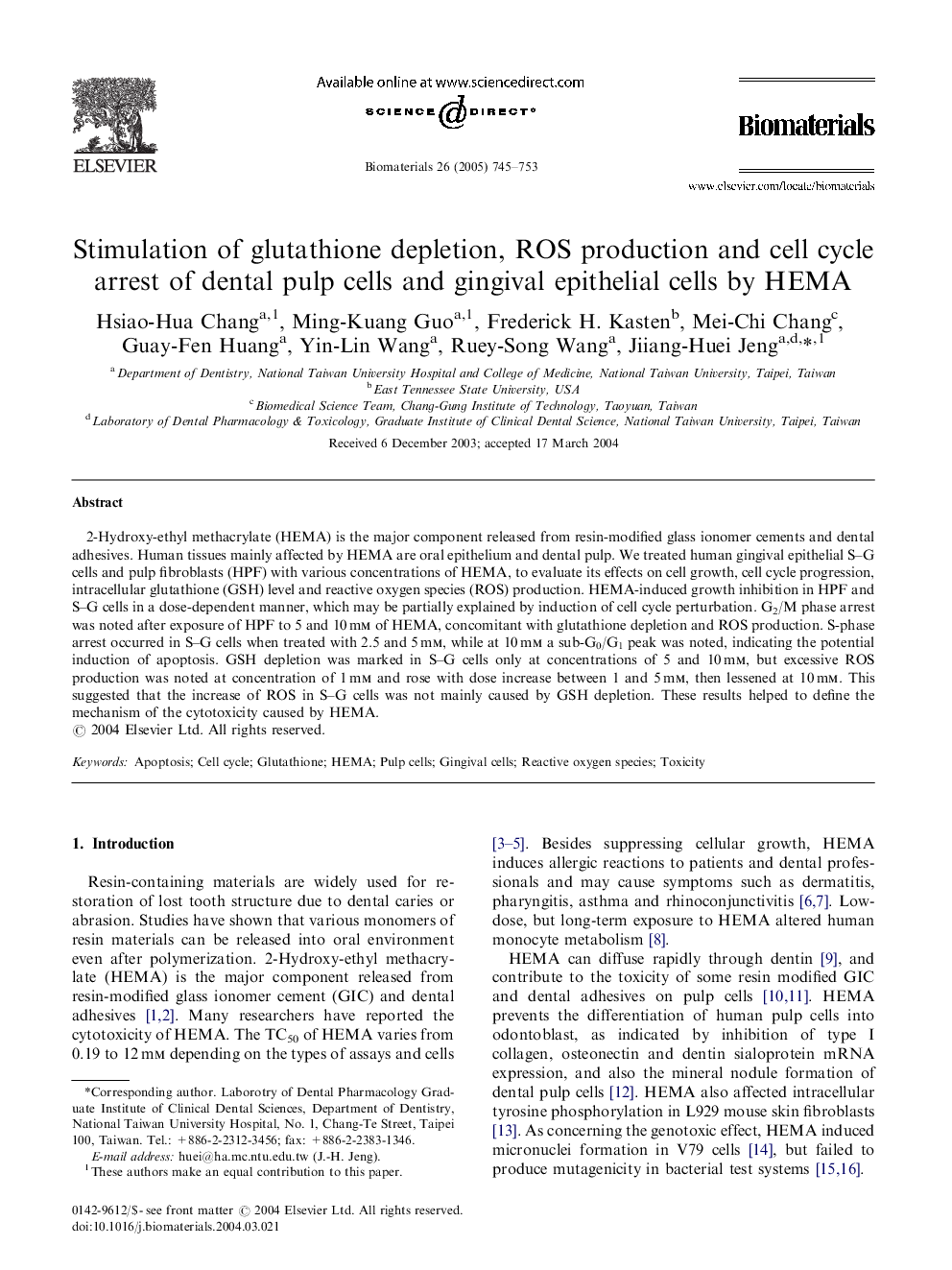| Article ID | Journal | Published Year | Pages | File Type |
|---|---|---|---|---|
| 10230275 | Biomaterials | 2005 | 9 Pages |
Abstract
2-Hydroxy-ethyl methacrylate (HEMA) is the major component released from resin-modified glass ionomer cements and dental adhesives. Human tissues mainly affected by HEMA are oral epithelium and dental pulp. We treated human gingival epithelial S-G cells and pulp fibroblasts (HPF) with various concentrations of HEMA, to evaluate its effects on cell growth, cell cycle progression, intracellular glutathione (GSH) level and reactive oxygen species (ROS) production. HEMA-induced growth inhibition in HPF and S-G cells in a dose-dependent manner, which may be partially explained by induction of cell cycle perturbation. G2/M phase arrest was noted after exposure of HPF to 5 and 10Â mm of HEMA, concomitant with glutathione depletion and ROS production. S-phase arrest occurred in S-G cells when treated with 2.5 and 5Â mm, while at 10Â mm a sub-G0/G1 peak was noted, indicating the potential induction of apoptosis. GSH depletion was marked in S-G cells only at concentrations of 5 and 10Â mm, but excessive ROS production was noted at concentration of 1Â mm and rose with dose increase between 1 and 5Â mm, then lessened at 10Â mm. This suggested that the increase of ROS in S-G cells was not mainly caused by GSH depletion. These results helped to define the mechanism of the cytotoxicity caused by HEMA.
Related Topics
Physical Sciences and Engineering
Chemical Engineering
Bioengineering
Authors
Hsiao-Hua Chang, Ming-Kuang Guo, Frederick H. Kasten, Mei-Chi Chang, Guay-Fen Huang, Yin-Lin Wang, Ruey-Song Wang, Jiiang-Huei Jeng,
